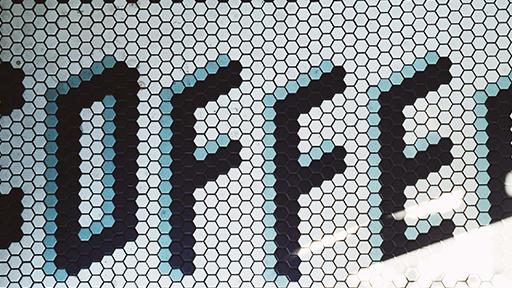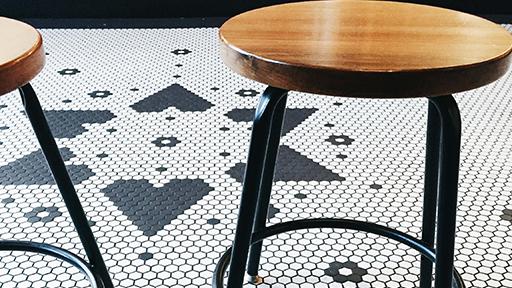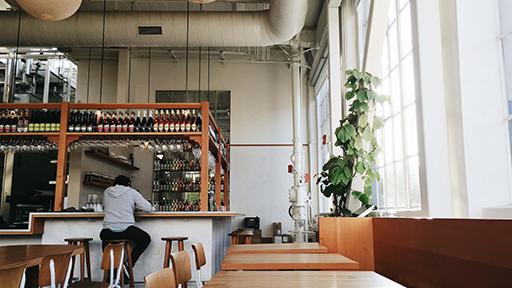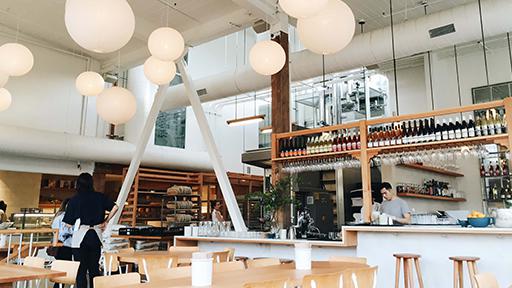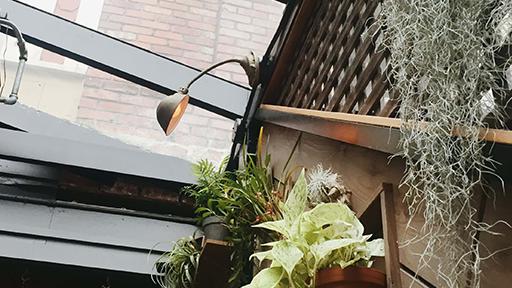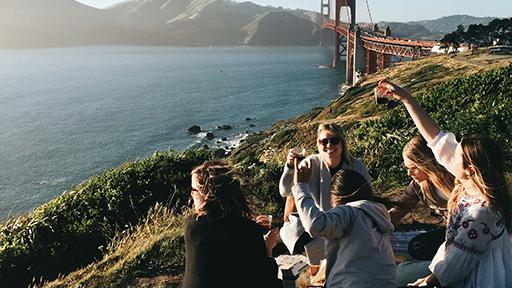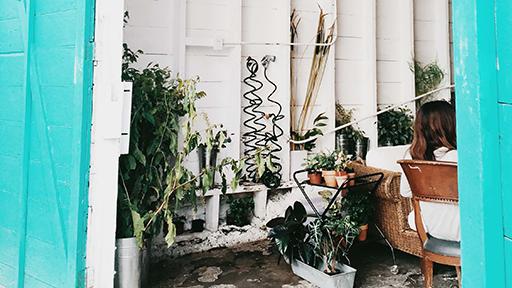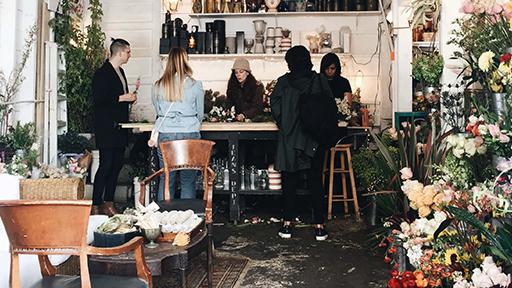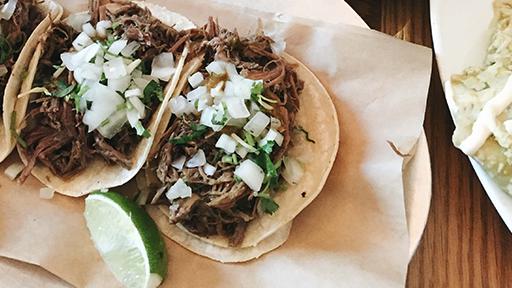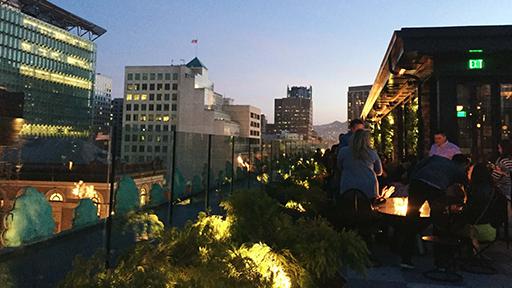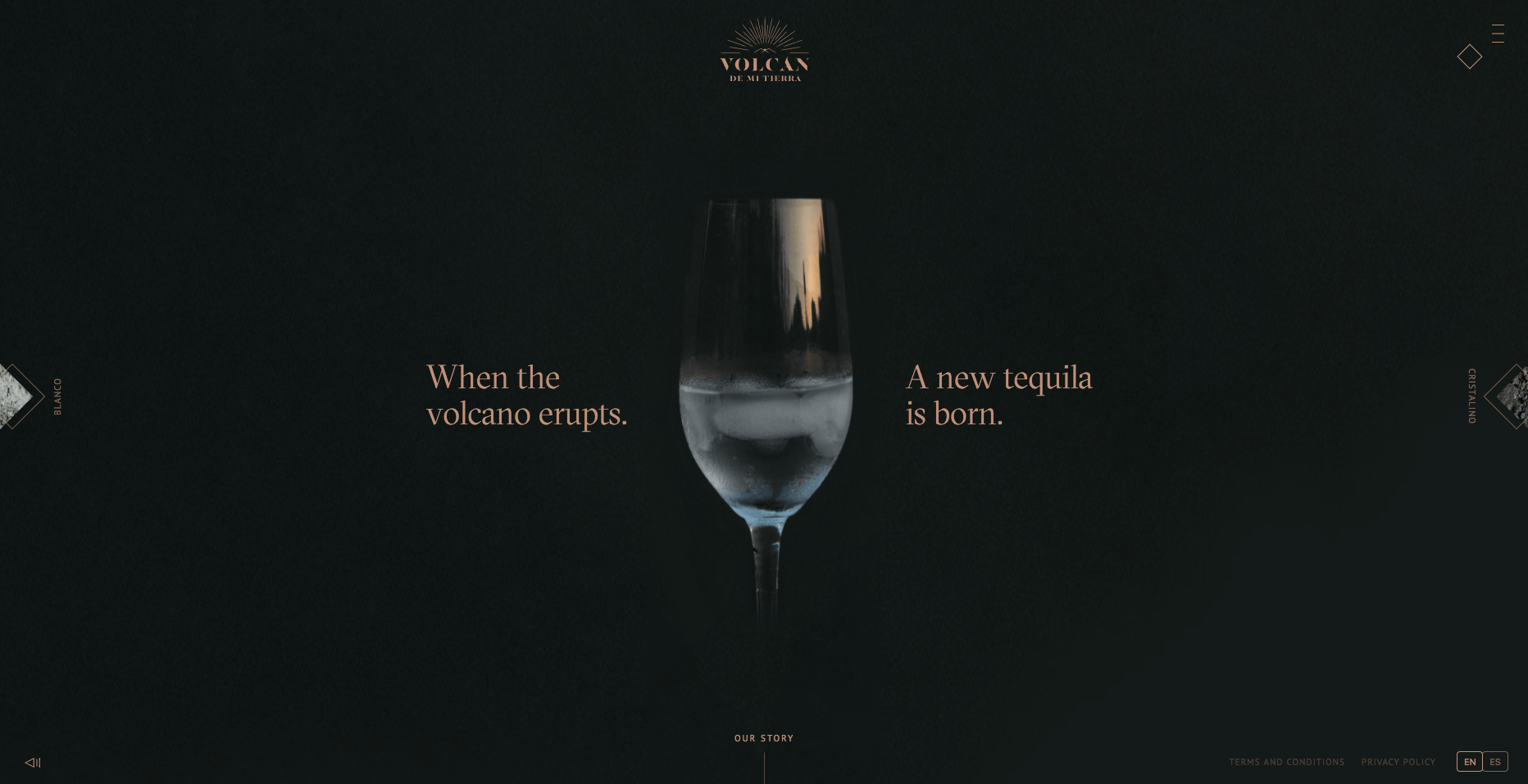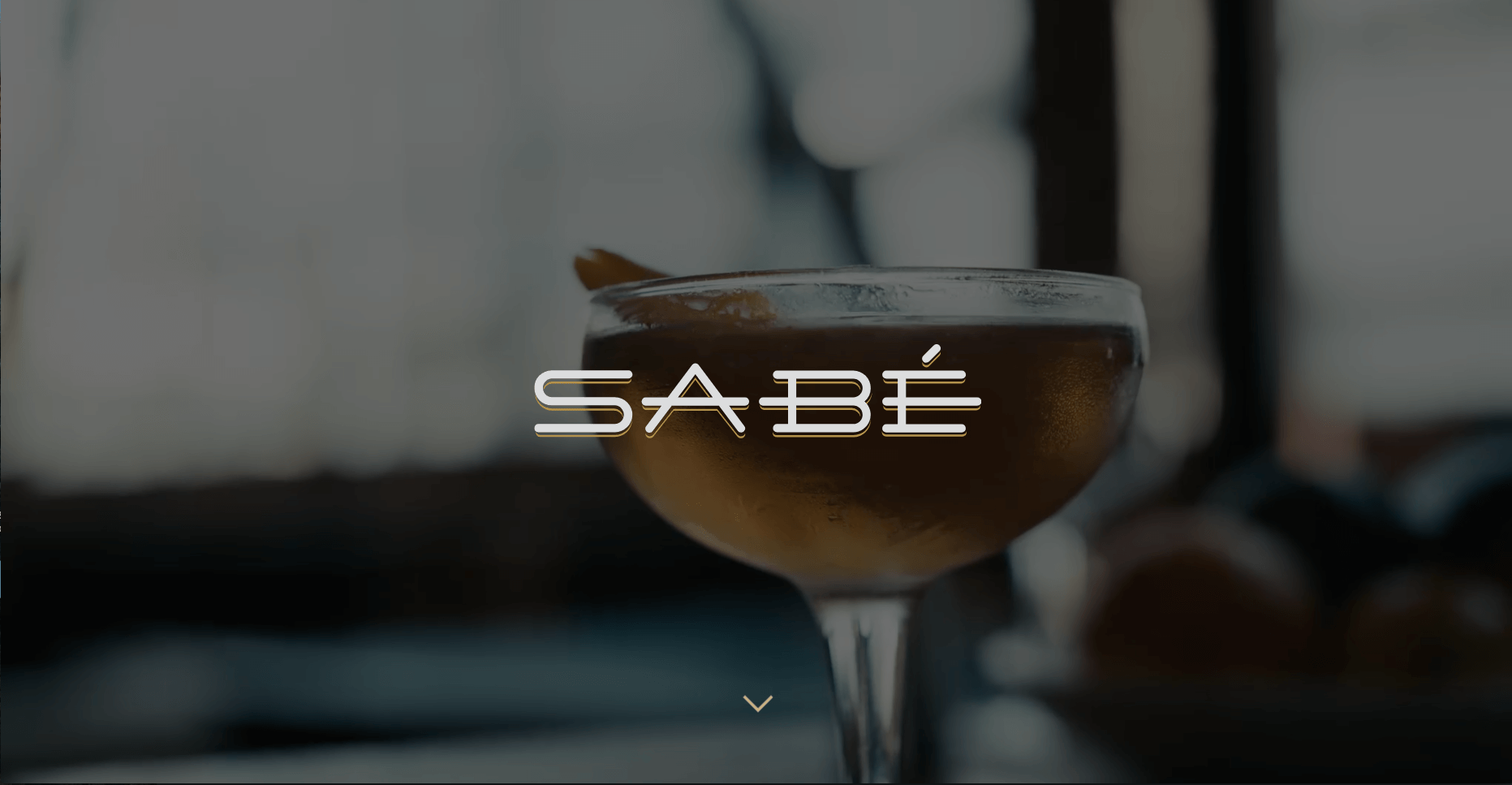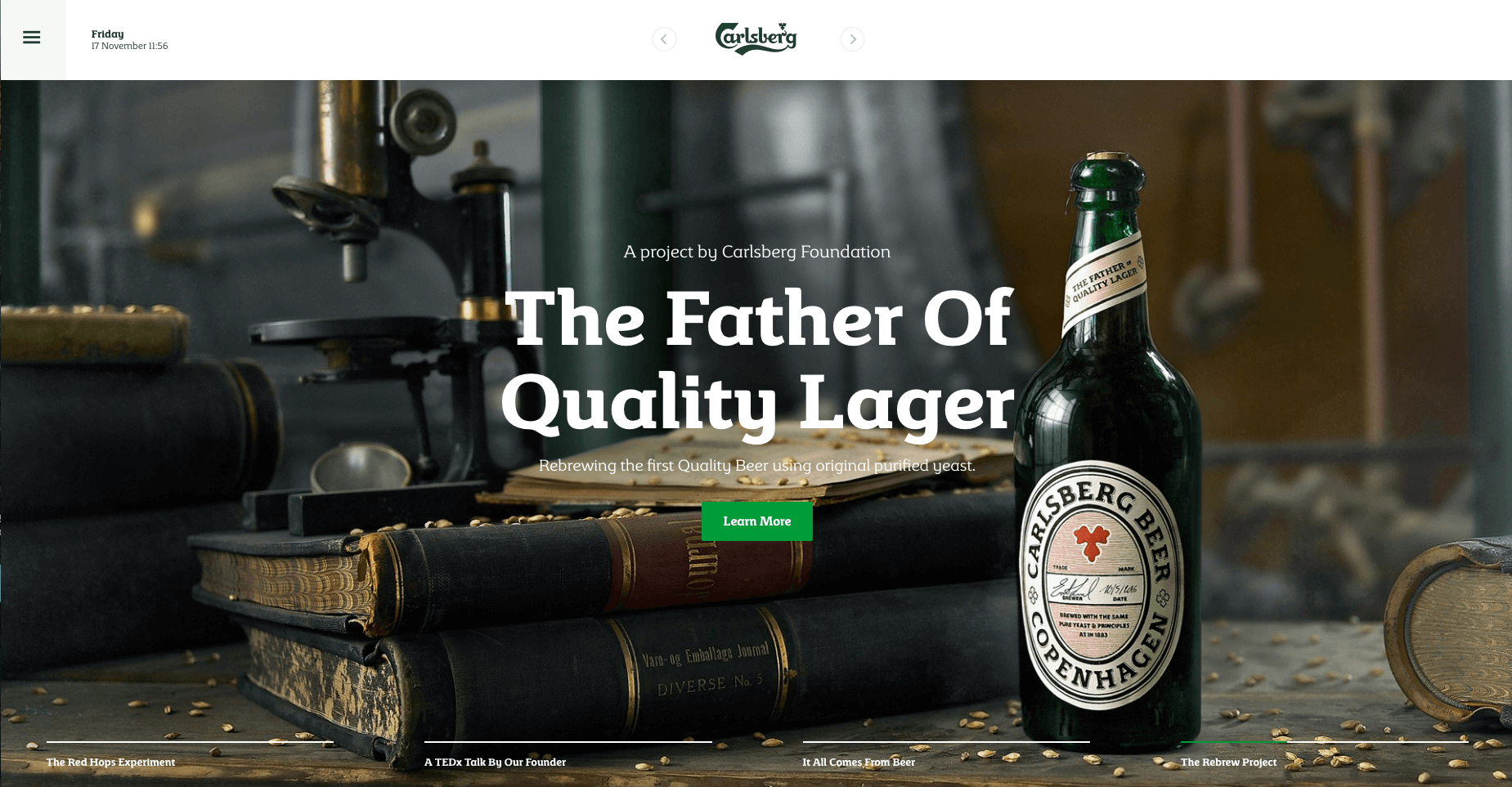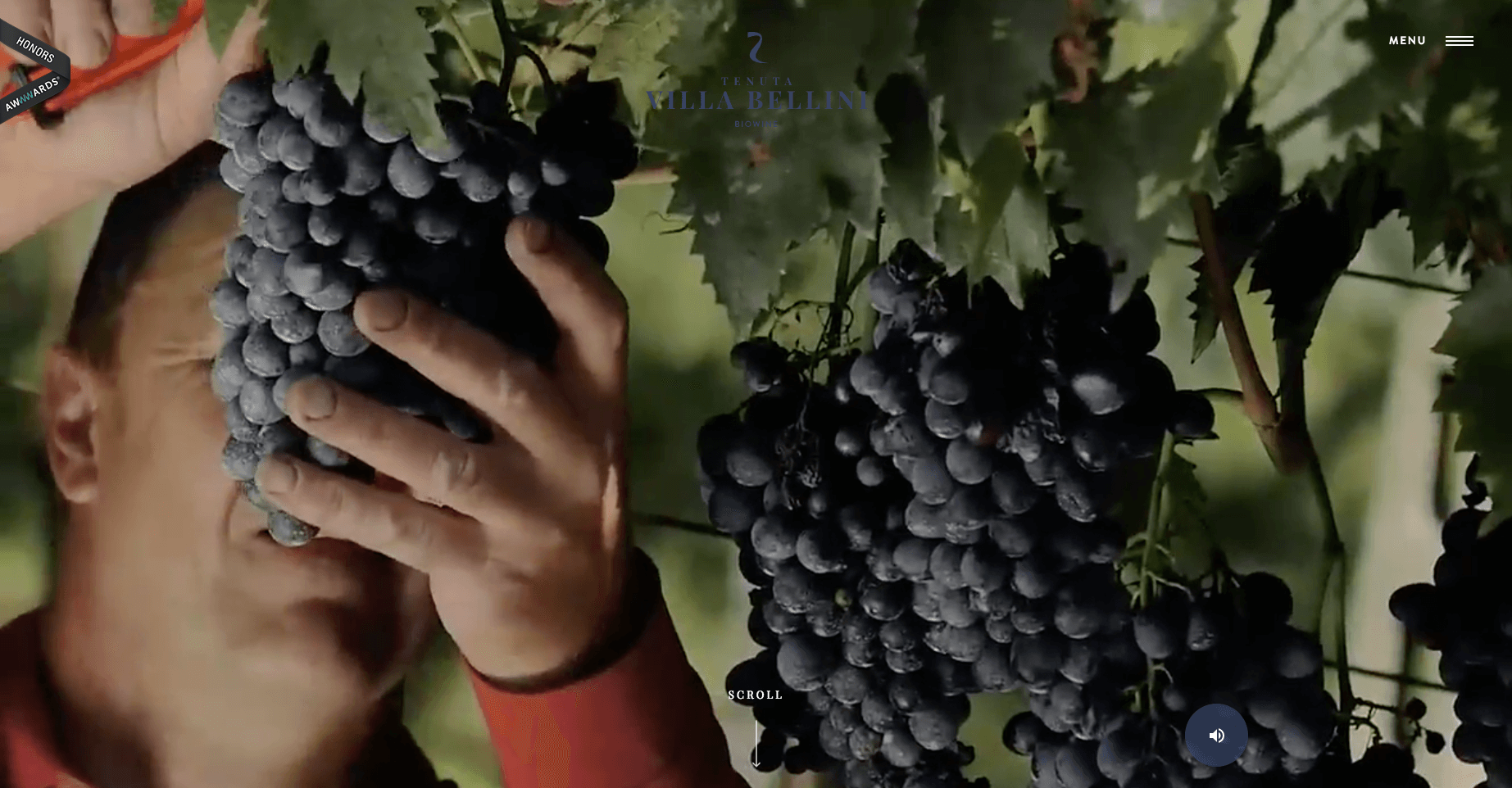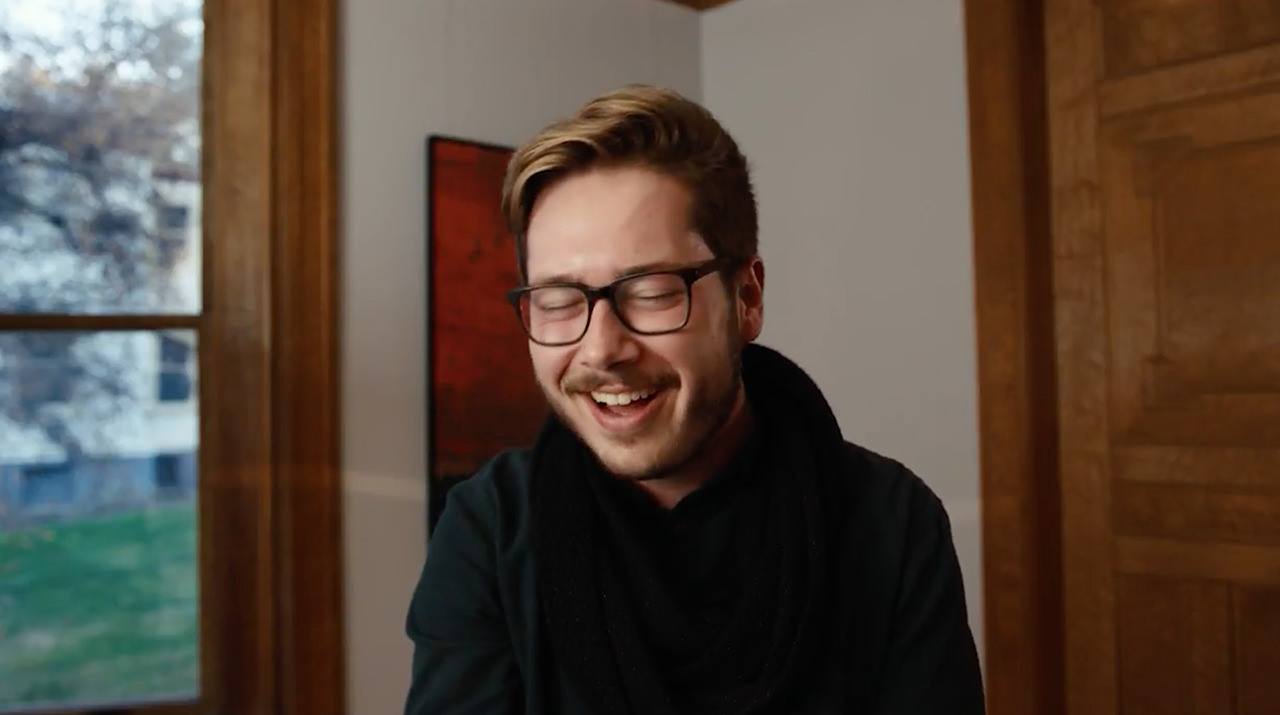A few months ago, I was convinced I could never be a designer.
By Patricia Zee
Going into college, I thought that I should get a job in business, engineering, or something along the lines of what my parents (and frankly almost everyone else) thought was a stable and sustainable career. I was always the type of person who loved watching commercials or going to museums and imagining all the work that went behind the end product, but I could never imagine myself actually being the one behind the canvas. The image of a starving artist has constantly been engraved into my head, and while I saw so many of my peers succeed in the field, it never occurred to me that I could someday walk in their footprints.
I decided to pursue a hybrid degree of design and business management; one that taught me the ins-and-outs of properly prepping a file for press, creating functioning cells in excel, difference in the various business laws, financial & managerial accounting, and so forth. I felt like a part of me was being wasted…as if I had not learned everything that I wanted to learn. Logically, I felt like I was doing all I can, but I could not shake this feeling off that I was wrong.
It was by accident that I stumbled into an Advanced Web Design and Production class for my major. It wasn’t even a class for my concentration, but I was curious and had a few free class credits so I thought I would give it a shot. Our main project was to code our entire portfolio based around what profession we wanted to pursue. Being the management-focused person I am, I centered my work around that laundry list of skills I mentioned earlier. To my surprise, my professor pulled me aside and told me flat out that I was pursuing the wrong career.
At first I ignored her and continued to apply for jobs in project management or other “more stable” jobs, but that worried feeling came back to raise its head
What am I doing wrong?
I entered my college’s career week still jobless and worried. With my graduation date creeping closer, I attended a career walk talk from Affinity Creative Group’s Marketing Analyst, Nick Azevedo. He talked about his experiences and how important it is to balance life with work, and how to truly dive deep and discover your passions. I was inspired to say the least. I appreciated how his workplace seemed to really value individual growth and exploration, and I was curious to learn more. It was later when I met Justin Witt, the Digital Director, who told me about a UI/UX design internship with their team.
Fast forward a few phone calls and interviews and here I am.
Since I started, I’ve learned so much about design, photography editing…but most importantly I learned what it’s like to work somewhere you enjoy going to every day. A place where you want to give every project your all. Not only because you’re passionate about the work you’re creating, but because you’re inspired by the people around you. The team at Affinity really made me feel valued, not just as an intern, but as a human being. They cared about what I had to say and were willing to go out of their way to help me whenever I had a question. While fun company parties are always a plus regardless of the job, it truly is the people that can make you excited about waking up to drive an hour and a half to work.
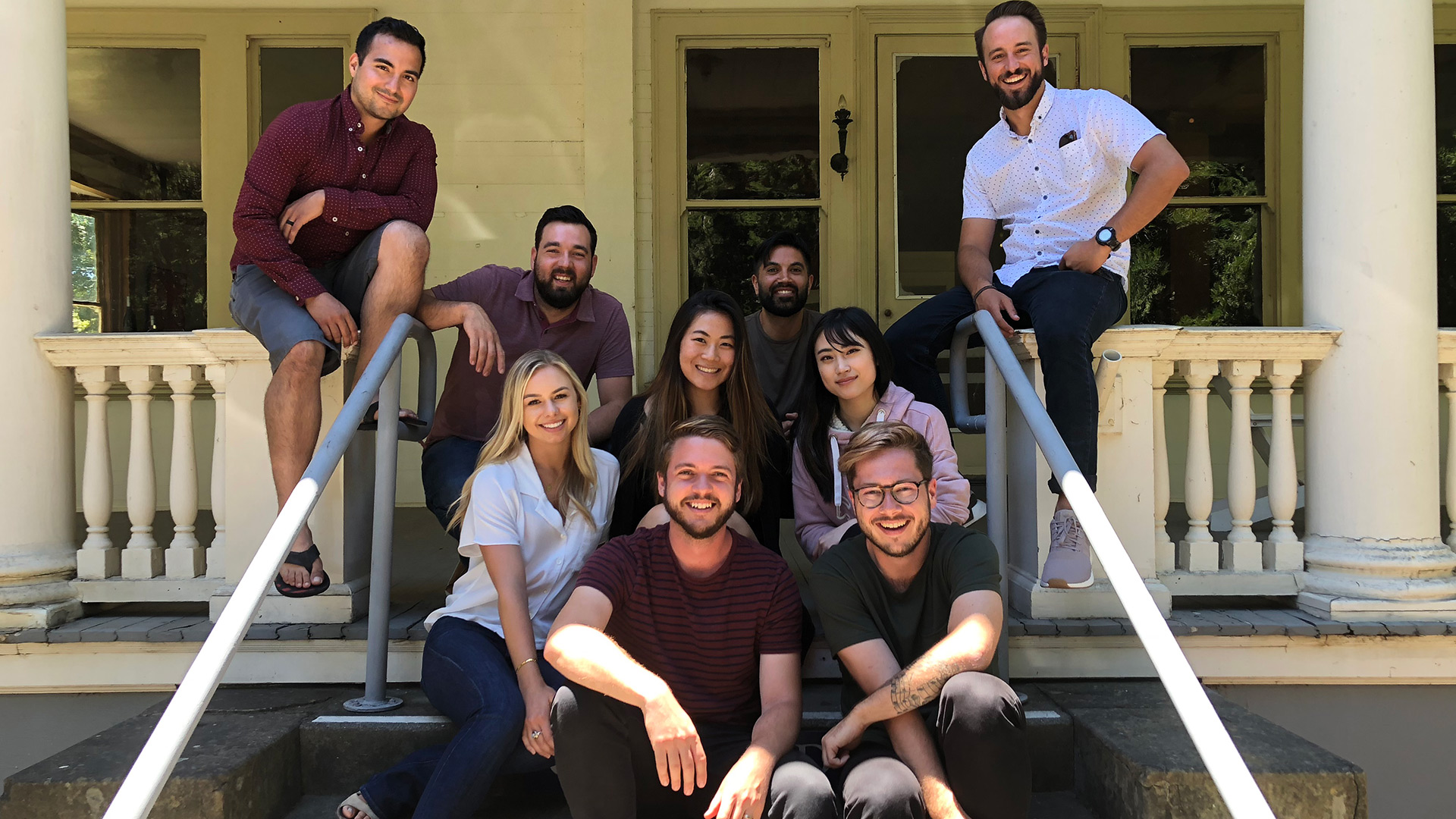
In summary…
While I learned all the hypotheticals and concepts that should help me survive the workforce, school cannot teach the most important thing to know in order to thrive in the post-grad life:
What is it that you value the most?
Is it the people you work with? Is it flexible hours where you can work from home while recovering from wisdom tooth surgery? What about having the freedom and confidence to admit to your peers that you need help? Or a place where they want to hear what you have to say and truly value your perspectives?
For me, it’s somewhere that is committed to helping me grow as both a professional and as a human being.
Everyone’s journey to finding the answer to that question is different, and I am very honored to have been able to start my journey here.

A Designer’s Guide to SF
A Designer’s Guide to San Francisco
By Kristin Yeh
We are lucky enough to have our studio just a short drive away from San Francisco, the 7×7 home of exquisite cuisine, unbeatable views, rich history, and (of course) Karl the fog. As a designer, living in the city is a huge source of inspiration for me—from its Victorian architecture and curbside wildflowers to its foggy beaches and eclectic cocktail menus. I always prefer reading curated guides from local creatives rather than sorting through lists of crowded tourist attractions, so I thought I’d share some of my favorite gems for a weekend in the city!
01 — Coffee
First things first…coffee. Our team at Affinity has a shared love for good coffee (and maybe a slight addiction), so its no surprise we’ve scoured every corner of the city to find the best cup. My current favorites are Sightglass (really nothin’ better than their vanilla cold brew on a warm day) and The Mill (their cinnamon sugar toast is also a must).
02 — Brunch
Come on, we all know the best weekends start with brunch. If you’re in the mood for some pastries and fancy toast, Tartine Manufactory is a bakery, ice cream shop, restaurant, bar, and coffee shop…all rolled into one dreamy space. Their pan suisse (aka chocolate croissant) is to die for. Make sure you head next door to Heath Ceramics afterwards to fall in love with all the colors and textures and explore the beautifully designed publications at Heath Newsstand. Horsefeather is another great staple, and the best part is—I’ve never had to wait for a table, even at peak brunch hours on a Saturday. 10/10 for atmosphere, service, food, and cocktails.
03 — See/Do
Dolores Park is the tried-and-true spot for an afternoon picnic, people watching, and palm-tree-lined view of the city. Walk a few blocks to Ampersand and find yourself in a floral dreamland where you can make your own bouquet or have one of the experts build one for you. Head over to Golden Gate Overlook in the Presidio for an iconic ocean view alongside the Golden Gate Bridge—if you’re lucky, you might even see some whales!
04 — Dine
Mission Chinese is an eclectic, not-your-average Chinese restaurant in the heart of the Mission. Trust me, you’ll be craving their thrice-cooked bacon every day for the rest of your life. Matador is a great spot for modern, elevated Mexican food and amazing cocktails. I would highly recommend their prickly pear margarita and the queso fundido as an appetizer to share!
05 — Drink
Charmaine’s is a classy rooftop lounge on top of The Proper Hotel with highbrow cocktails, fire pits, and panoramic views of the city—really, what more could you ask for?
Let us know if you make it to any of these places next time you’re in the city. And if you’re an SF local, we would love to hear what’s on your list of quintessential spots that keep you inspired. Cheers!
The Secret Behind Craft Cocktails
The Secret Behind Craft Cocktails
By Jonathan Potts
As the craft spirits industry continues to gain momentum, the modern day mixologist plays a large part in developing new unique cocktails that showcase these craft spirits and their interesting accoutrements. With added brands and barriers to entry due to this momentum, mixologists have more to choose from than ever. This is an opportune time for brands and bartenders all over the country to find the perfect addition to their cocktails, and the greatest response to this demand is a great resurgence for producers of cocktail bitters.
What exactly are bitters?
Bitter is one of the five major flavors that your tastebuds identify along with sweet, sour, salty and umami. They have been used medicinally for hundreds of years for digestive ailments and were developed as patent medicines in the 1800’s (typically marketed as “tonics” back then). Bitters contain a combination of botanicals – traditionally herbs, spices, flowers, barks and roots which are steeped in alcohol to create a complex and extremely concentrated liquid to be consumed on its own or added to different drinks like tea, juice, coffee and sparkling water. They just so happen to be excellent in a cocktail as well (but I add bitters to almost anything I am drinking).
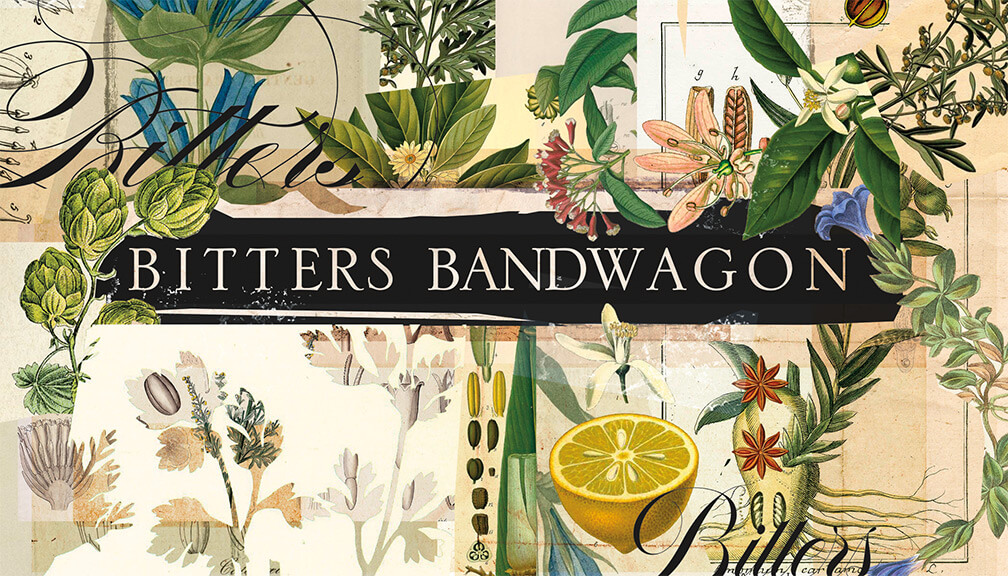
I ventured into the craft-spirits world seven years ago and have been handcrafting my own bitters for about the same amount of time. With a love affair for gin, I discovered that I really enjoyed Campari, a main ingredient in the classic Negroni cocktail, and not just in the cocktail, but on its own, or simply in soda water. I then started to explore other aperitifs such as Amaro and Cynar, and after learning about some of the ingredients used in these bitter aperitifs I decided it would be fun to make a version of my own. Since I have experience as a home brewer and avid gardner it was natural for me to imagine concocting my own bitters recipe. I’ve found the process of growing the herbs, harvesting them and crafting my own unique flavors from them extremely satisfying and to this day continue to amaze guests with my rare bitter formulas such as kumquat and hops. Not to mention my coworkers love when I bring in a fresh batch to share for a casual spring-time afternoon cocktail.
There are tons of bitter brands in the market, each with their own take and speciality. If this warm weather’s got you feeling adventurous, here’s a recipe you can create at home and share with your friends.
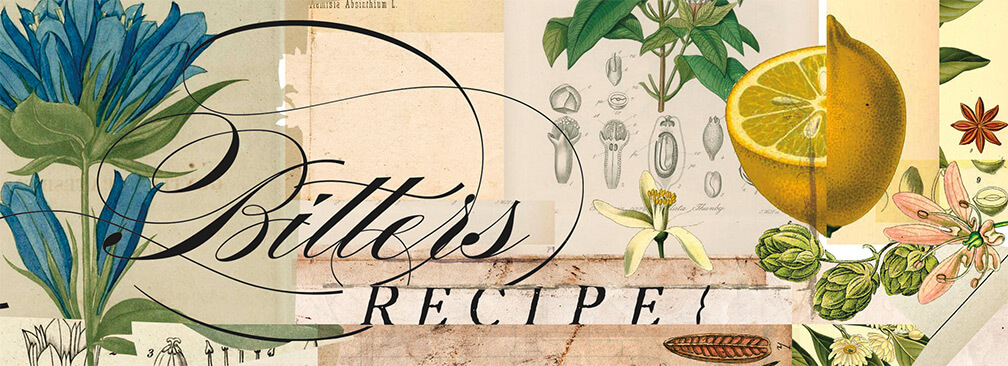
My Take on the Classic Orange Bitters Recipe
- 2 cups grain alcohol
- Zest from 4 organic oranges (making sure to avoid the white pith)
- 5 whole cloves
- 1 whole Star Anise
- 1 Cinnamon stick
- 1 inch ginger ( shredded )
- 10 cardamom pods
- 1 teaspoon Gentian Root
- 1 teaspoon Wormwood
Simply infuse the botanical ingredients in a neutral base spirit such as grain alcohol at room temperature in glass jar. Shake daily and wait a month. Then strain the solids from the liquids and store in a dark bottle in a cool dry place (side note – alcohol with a high-proof is more effective at extracting the flavor).
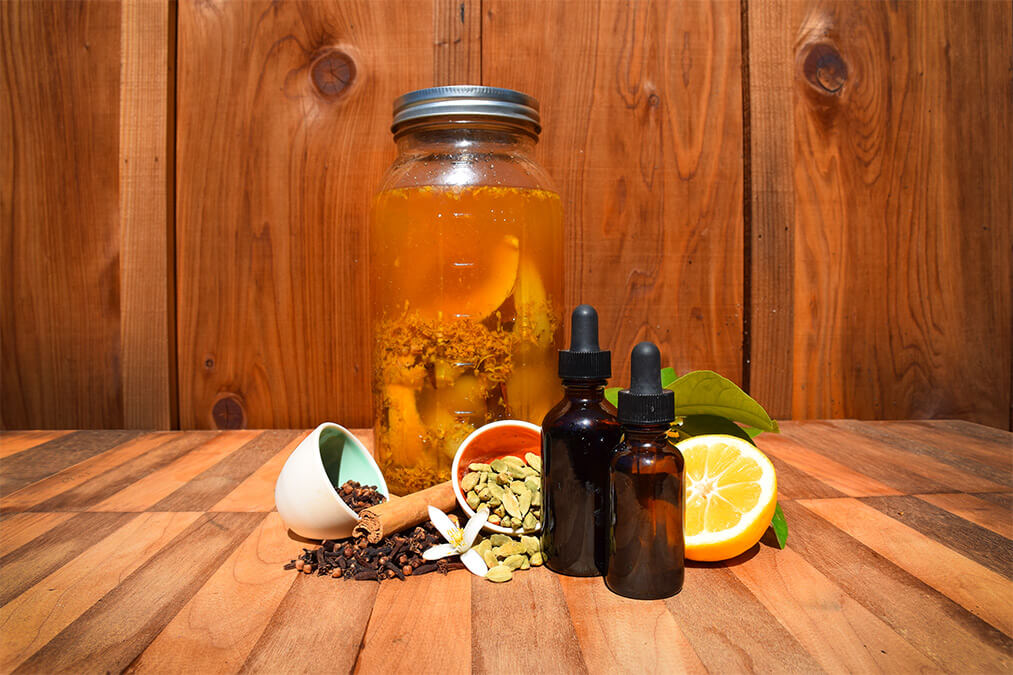
Jonathan Potts is a designer with Affinity Creative Group for over two years. He comes from NYC where he worked for almost a decade in the advertising world focusing on the spirits industry. After some time spent traveling, he felt compelled to move into the next chapter of his story and career. California along with wine and spirits packaging beckoned him as his next adventure and he has been enjoying the lifestyle ever since. With a background in illustration and a passion for gardening Jon has a lot of creative energy to bring to the table.
Can Great Design Increase Sales?
Can Great Design Increase Sales?
Design needs to do more than look good. It needs to generate results.
“In order for companies to compete in today’s dynamic consumer landscape, good package design has become table stakes” -Laura Richardson, Vice President of Design Solutions at Nielsen.
When we announced our submission for this award earlier this year, we hoped to prove that our mantra of creative certainty could be validated by something beyond our experience. Now, we are proud to announce that we have been selected as a winner of the 2018 Nielsen Design Impact Award for our redesign of the Robert Mondavi Private Selection line.
But what does this mean for our clients?
“In a growth challenged marketplace, it’s important for marketers to truly understand the value a successful package redesign can bring to a business’ bottom line”
At the intersection of design and data lies creative certainty,an ideology that has yet to be fully embraced by consumer facing products. Affinity understands the impact that creative strategy has on a company’s brand, and it is truly remarkable to see the partnership between Nielsen and The Dieline to bring this ideology to the general public through a data-driven design award.
We are only as strong as the people we work with, and we’re beyond thankful for this opportunity from Constellation Brands as well as Nielsen and The Dieline.
The full press release from Nielsen is available here. This includes more information on the Nielsen Design Impact Awards and the methodology used to assess each submission.
GenXers Are The Biggest Spenders
GenXers are the biggest spenders.
By Christine Lynch
I work on the creative side of wine packaging, and as a GenXer (and an avid wine drinker) I constantly find myself inundated with sales data and statistics revolving around the marketing dollars spent on advertising to millennials. While they are one of the largest consumers of wine in terms of volume, marketers should keep in mind that it’s the GenXers that will spend more on a bottle of wine.
This article I found from Forbes suggested just this theory: “Gen X was the most likely to spend $70 on a bottle of wine more than once a month,are the most engaged wine club customers and are growing their wine cellars.”
As a whole, we are in an optimal position to have luxury brands marketed towards us. Not only are we receptive to this marketing, but we want these brands to relate to us and our experiences, just as much as the millennials want to be heard and understood. Millennials may be more adventurous in terms of their wine selection, but collectively they do not have the budgets to afford some of the brands that the GenXers have their sights set on (Flora Springs for example, is a favorite of mine).
We do tend to be more traditional as a whole, but we live both in the old and new school of marketing (print/email vs. digital/social media) and look for all the essential quality cues both in the packaging and the wine itself. I don’t have any problem dropping $50-70 on a premium bottle of wine, and possibly more for special occasions. I’m settled in to my life; I love to spend and have the funds to do so — and I love to spend it on wine.
Younger Generations are asking more from wine brands. Surprised?
Younger Generations are asking more from wine brands. Surprised?
From what’s on the front to what’s inside, the younger generations are being more articulate (and opinionated) when it comes to their choice of vino. This ultimate choice on the consumer’s end stems from a wine brands perception online and instore that can make or break their path to purchase.
The gold-standards throughout the years, however, have not changed much. Colorful, ornate, and eye-catching design will always draw the consumer in, and as younger generations start to adopt new palates and habits they will start to notice things about their drinks of choice that they may not have considered at an earlier point in life.
Our team believes in the power of design and how it can influence consumer’s opinions both online and in-store, and we’re not the only ones who think this way. Check out what Quartz has to say about this topic and what specific triggers get the young-in’s off of Netflix and into the grocery store.
Everything I know about branding and design, I could have learned from my Yoga instructor.
By Ed Rice, Director of Strategy
I’ve missed quite a few yoga classes lately. Being sequestered at home to recover from knee surgery has a way of putting a crimp in all of your chakras. But that hasn’t stopped me from thinking “Zen” and realizing my Yoga instructor, Grace, could have just as easily been a branding guru. At the beginning of every practice she references The Five Principles of Yoga. Now, having time to think about it, Grace’s five principles are essentially the same as our guidelines to create, build or revitalize a brand. Seriously. Humor me for a moment and consider the following:
The Five Principles of Yoga…or…A Zen approach to successful brand building.
Intention—
as class begins, my Yogi asks the class to set an “intention” for that day’s practice. She means this as a special way of having a favorable relationship with yourself and with those whom you wish to connect—a means of sending positive energy outward. Similarly, at the beginning of a brand makeover, we ask a client about their intention for their brand—how should it evolve to better connect with key audiences? What new energy is required to increase market appeal? And ultimately, what does a positive outcome look like? What is the desired end-state?
Openness—
My instructor also encourages the students to remain open, inviting and flexible. Not just giving limbs and joints freedom to move, but also, and perhaps more importantly, being open to the transformative power of emotional flexibility—being receptive and welcoming to “what shows up.” This concept is aligned with our guidance for clients seeking to build brands with a meaningful consumer connection. We suggest they tap into their customer’s feelings and ideas of what they want in a brand—avoiding preconceived notions and instead, exploring possibilities. The key is to establish a more empathic grasp of consumers’ emotions and point of view. When judgment is suspended and true understanding is acquired, it enables the agency to create a meaningful brand experience, one that will resonate with customers, because its genesis is from a place of emotional understanding.
Rooted—
next, with the class in a seated position, my Yogi reminds us to be firmly rooted—she remarks how important it is to be grounded and intact with the earth. This is not unlike our starting point in brand development—a solid brand must have a well-designed foundation to establish “standing” and project “presence”—it needs to stand strong and make “impact,” particularly if it is a brand design that must project credibility either on a store shelf or off the screen of a smartphone.
Breathe—
the teacher then makes a very specific point about the importance of consciously breathing—referencing the life-giving force of inhaling/exhaling—which provides a range of benefits—being present, opening new cerebral pathways and channeling energy. During the creative development process, when critiquing work, our designers often assess if a particular creative concept “breathes.” It’s a way of asking if a design direction has sufficient balance, space and “breathing room.” The most successful creative brand solutions always embrace this principle and it really shows.
Connected—
during the course of a practice, my Yogi reminds us that all body parts, (and mind), are interconnected. She references the “fascia” that attaches, stabilizes and encloses all of our bones, muscles and internal organs. This is not unlike the brand architecture we establish when creating a distinctive label for an artisan wine, small-batch whiskey or craft beer. It’s the realization that all elements—the brand-mark, brand icon, design textures, flavor descriptors, patterns, colors, etc., are all interconnected. We often speak of “connected brand tissue” and its appropriate degree when advising clients on line extensions, portfolio tiering and new product development. When properly executed, the end result of a well-connected brand design is almost magical—a powerful, unified, communicative force that becomes a memorable experience for every consumer.
Well, you might see my analogy as a stretch, (sorry, I couldn’t help it), but for me, it all hangs together. Great brands, like the practice of yoga, are based on timeless principles that are hard to ignore, wise to follow and will pay great dividends in the end.
About the Author
Ed Rice is Director of Brand Strategy at Affinity Creative Group, Mare Island, California. His journey, like his yoga practice, has taken many twists and turns. From Wharton undergrad, to U.S. Naval Officer, to Lucas’ THX technology marketer to Landor Associates managing director, and more. He’s enjoyed a great ride and it’s not over. At Affinity, a specialty marketing agency near California’s wine country, Ed collaborates with talented creative colleagues helping clients of all sizes in wine, spirits and other categories, develop visually stunning, memorable and meaningful brand experiences.
Follow Ed @edwinrice or contact him with questions and/or inquiries regarding Affinity Creative Group via email.
What is a website worth?
What is a website worth?
A short, one-sided discussion on the value of custom digital experiences and their impact on your brand.
Building a website is incredibly easy nowadays. A responsive site built with Squarespace or Wix can cost $100 a year all-in. So why spend tens or hundreds of thousands building a custom website? The most succinct answer I can give is: for the sake of excellence, the extra 10%, the above and beyond. The funny thing is that extra 10% turns out to be worth a whole lot more than that in ROI.
Your website IS your brand
I’ve heard it said that the website is an ‘extension of your brand’. I beg to differ. A brand is not what you make it – it is what your consumer believes it is. There are no extensions of your brand, there is only the brand itself. When you boil it down a brand is ultimately nothing more than how people feel when they hear your name. Ergo every single touch point of your product, service, or company is critical to your identity. Fact: 75% of customers admit to making judgments about a company’s credibility based on their website design. Even if your product or service has nothing to do with design or technology, the concept still applies. For example a bad wine website equates to bad wine in the consumer’s mind.
Own your digital space
In one way or another your brand is unique – it has to be. Be it flavor, ease of use, or fragrant aroma… something about your product feels better than your competitors and your consumers understand this; they depend on it. Defining and owning this unique quality is the key to differentiation in a saturated market. Apply this principle to your digital presence and you’ll understand the necessity of a site that is uniquely you. Templates and ‘build your own’ services can create sites that are easy on the eye, but they will never be able to capture that “uniqueness” that your customers know and love you by.
How to know it’s worth it
Clients sometimes ask me, ‘can you guarantee a return on investment?’ A better question would be, ‘can you see into the future?’ and if my answer to that were ‘yes’, I wouldn’t be writing this article. There are too many variables associated with ROI to give a complete answer – but I can tell you the website plays a role. A better way to think about ROI is this: Your website is a silent salesmen, out there 24 hours a day making impressions, winning or losing business with every click. And just like salesmen, the good ones pay for themselves quickly.
The proof is in the pudding
The most successful brands in the world are always looking for an edge over their competitors, innovating new ways to grow, and improving upon old ones. That constant desire for improvement is what makes them the best and it starts with a humble and honest self-evaluation. Start here (awwwards.com)
Examples of incredible digital experiences (websites) in the wine and spirits world…
In closing…
In fear of leaving you hanging, I’ll answer the million-dollar question (and subsequent title of this article) by saying,it’s going to cost more than you’re probably hoping to spend. But it’s worth it. To find out exactly how much… click here.
QFTWG — John Swain and Dave Miller
QFTWG — Nick Azevedo


Welcome to

A modern partnership between Affinity Creative Group and kabookaboo developed to provide our clients more...
more experience, more creativity, more strategy, more results.
Speaking of more, check back soon to see a new oneteam™ website! In the meantime, enter your email below to download our Agency Profile or continue through to check out the Affinity Creative Group website.


